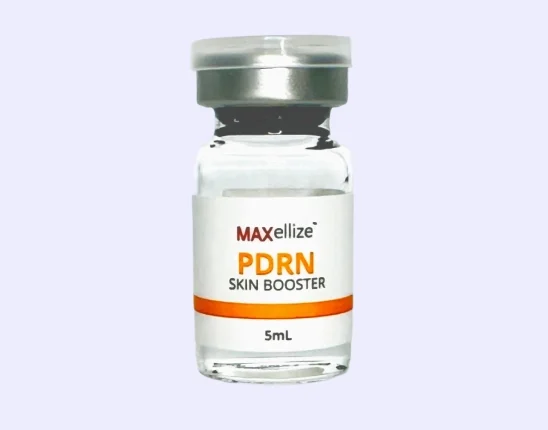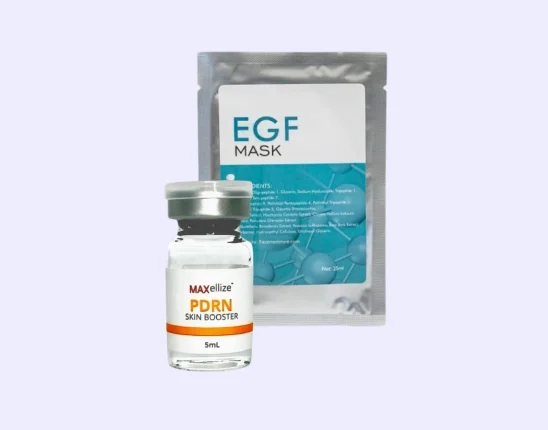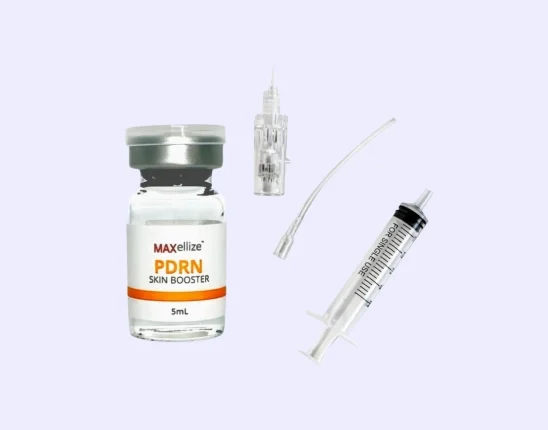Growth factors are molecules secreted by cells that play a role in the growth and proliferation of cells through signal transduction. They’re capable of facilitating wound healing and regeneration, and they’re widely exploited in regenerative medicine. One of such growth factors is the vascular endothelial growth factor.
So what’s the vascular endothelial growth factor? The vascular endothelial growth factor (VEGF) is an angiogenic factor that stimulates the production of new blood vessels. It plays a major role as a growth factor for vascular endothelial cells. High levels of VEGF are also observed in tumor cells and are implicated in cancer cell pathophysiology.
What’s Vascular Endothelial Growth Factor?
The vascular endothelial growth factor (VEGF) is a growth factor associated with the production of new blood vessels. It’s also known as the vascular permeability factor due to its vascular permeability activity that was observed from a fluid secreted by a tumor.
Members of the VEGF family include the following VEGF-A, VEGF-B, VEGF-C, VEGF-D, PlGF (placental growth factor), VEGF-E (Orf-VEGF), Trimeresurus flavoviridis svVEGF, differentiated based on their affinity for different vascular endothelial growth factor receptors (VEGFRs).
The vascular endothelial growth factor receptor (VEGFR) is found in the cell surfaces. It has tyrosine kinase activity and has a structure typical of other tyrosine kinase receptors: a transmembrane domain, a cytoplasmic domain, and a tyrosine kinase domain.
Role Of Vascular Endothelial Growth Factor On The Human Body
The VEGF is present in endothelial cells and also non-endothelial cells which include other cell types such as tumor cells, macrophages, and renal mesangial cells. Aside from its role in the cardiovascular system, it also has its physiological functions on the central nervous system, the skeletal system, hematopoiesis, wound healing, and development.
1) Cardiovascular System
Cardiac myofibroblasts are involved in the repairing of tissues in the event that myocardial infarction occurs. VEGF is expressed in cardiac myofibroblasts and thus also plays a major role in repairing infarcts. Similarly, VEGF, specifically VEGF-C, is also involved in the generation of lymphatic vasculature. It’s an important component of the lymphatic endothelial cells, which play a central role in the development of the innermost layer of the lymphatic vessels.
2) Central Nervous System
VEGF plays a role in the central nervous system through its neuroprotective and neurotrophic effects, observable in situations when the organs are subjected to insult.
- VEGF protects Schwann cells and hippocampal neurons from the effects of ischemic injury.
- Motor neuron degeneration of the spinal cord may occur when VEGF induction is impaired.
- Increased expression of VEGF, VEGFR-1, and VEGFR-2 is observed when brain cells are exposed to 5% hypoxia (without oxygen); thus, brain cell survival in hypoxic conditions may be associated with VEGF stimulation.
3) Skeletal System
The formation of new blood vessels occurs in the growth plate of a developing bone due to VEGF. Remodeling of the extracellular matrix and formation of bone is also induced through the signaling activities of VEGF as well.
4) Hematopoiesis
VEGF is an essential component that stimulates hematopoiesis. In fact, knockout experiments where VEGF and VEGFR-2 are made to no longer function led to embryonic lethality because of impaired hematopoiesis and angiogenesis, bodily processes that are facilitated by VEGF.
Role Of Vascular Endothelial Growth Factor Expression On Disease Causation
VEGF is also known to be associated with certain types of diseases in the body. Some diseases that are linked to VEGF include intraocular angiogenesis, atherosclerosis, rheumatoid arthritis, osteoarthritis, and cancer. To combat this, it’s best to undergo treatments and use products prescribed by your trusted medical provider.
1) Ophthalmological Diseases
Intraocular angiogenesis (i.e., the formation of new blood vessels in the retina) is a contributory factor to vision impairment due to age-related macular degeneration, diabetic macular edema, and retinopathy of prematurity. This angiogenesis is associated with VEGF expression and thus, VEGF is also associated with the pathogenesis of the said ophthalmological diseases.
2) Atherosclerosis
Atherosclerosis is the disease state in which fats and other materials build up in the endothelial wall of the blood vessels. Foam cells are macrophages that engulf low-density lipoproteins which contribute to the build-up of these materials which are now called plaques. VEGF contributes to the aggravation of atherosclerosis by making the vessel more permeable to low-density lipoproteins and thus facilitating greater build-up of plaque.
3) Rheumatoid Arthritis And Osteoarthritis
VEGF is found in the synovial fluid of the joints of patients with rheumatoid arthritis while it’s found in the cartilage of patients with osteoarthritis. High levels of VEGF were observed to be expressed in rheumatoid arthritis and osteoarthritis, suggesting a correlation between the levels of VEGF and the pathology of these two disease states.
4) Cancer
VEGF is implicated in cancer pathophysiology due to its ability to supply nourishment to tumor cells by the formation of new blood vessels and helping the increased survival of the tumor cells. High serum levels of VEGF are even associated with poor prognosis in cancer patients. VEGF, particularly VEGF-C/D and VEGFR-3, are also involved in the migration of cancer cells to the lymphatic vasculature.
Some examples of cancers where VEGF is implicated include hematological malignancies, cerebellar medulloblastoma, and breast cancer.
- Hematological Malignancies – Overexpression of VEGF, VEGFR-1, and VEGFR-2 are observed in hematological malignancies. Disease progression in hematological malignancies is said to be associated with the expression of this growth factor and its receptors. Leukemic cells are also shown to have increased survivability due to the anti-apoptotic activities of VEGF in hematopoietic cells and the formation of new blood vessels.
- Cerebellar medulloblastoma – Dev cells are undifferentiated cells from cerebellar medulloblastoma. In these undifferentiated cells, VEGF and Sema3A work against each other, with VEGF promoting Dev cell survival while Sema3A promotes cell death.
- Breast Cancer And Metastasis – The invasion of breast cancer cells is demonstrated to be a specific response to VEGF and VEGF receptor expression because when exogenous, recombinant VEGF was supplied, the inhibition of invasion was reversed. Similarly, VEGF also has an effect on CXCR4 expression, which is an important factor in breast cancer invasion and migration.
Anti-VEGF Therapy
Vascular endothelial growth factor (VEGF) has been implicated in vision impairment resulting from the leading ophthalmologic diseases in developed countries namely age-related macular degeneration, diabetic macular edema, and retinopathy of prematurity. Anti-VEGF therapy is delivered via intravitreal injections of VEGF.
A study has shown it to be preventive against vision loss and promote vision improvements, comparable to the effects of other therapies such as ranibizumab. It’s also been shown to be a cost-effective therapeutic modality, although further improvements such as optimization of methods and studying other modes of administration such as topical application are also warranted.
Since VEGF is also implicated in cancer, anti-VEGF strategies are also indicated for patients with cancer. Due to its targeting of the pro-angiogenic and anti-apoptotic activity of VEGF, the blockade of VEGF helps the tumor cells to be more susceptible to the radiotherapeutic and chemotherapeutic modalities and is thus a good complement to these therapeutic modalities in managing cancer.
PEP Factor: The Best Formulation Containing Growth Factors And Other Natural Ingredients
The vascular endothelial growth factor (VEGF) is a growth factor that plays a central role in the formation of new blood vessels. It’s also implicated in the growth of tumor cells due to its supporting the vascular development of these abnormal cells. Anti-VEGF treatment is thus developed to inhibit its pathogenic effects on age-related macular degeneration and diabetic macular edema.
FACE Med Store’s PEP Factor is a non-tumorigenic, ready-made formulation containing basic fibroblast growth factor (bFGF), a growth factor involved in cell growth and proliferation, and copper peptide, an antioxidant involved in protecting cells from the destructive effects of reactive oxygen species (oxygen by-products that became reactive). It also contains natural products such as amino acids and nourishing nutrients.
PEP Factor may help in scalp rejuvenation and skin rejuvenation, resulting in improved appearance of thinning hair and brighter skin, respectively. It only has minor side effects in the area it’s applied to, due to its topical application. It may also be safely added to other treatment modalities such as microneedling and can complement the regenerative effects of these treatments.
Shop For The Best Medical Products At FACE Med Store
The vascular endothelial growth factor (VEGF) plays a role both in the normal functioning of the human body and in disease causation. Because of the biological properties of VEGF, it has become a therapeutic target for the treatment of VEGF-related disorders such as age-related macular degeneration and diabetic macular edema.
At FACE Med Store, we offer the best medical products developed from the latest technologies. We also strive for excellent customer service and transparency with our beauty and medical supplies by the help of our staff so you can choose medical products that are suited for your concerns. Contact us now at (800)770-9083 or browse through our shop.















